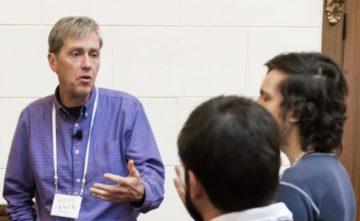Will Douglas Heaven in the MIT Technology Review:
 The search for AI has always been about trying to build machines that think—at least in some sense. But the question of how alike artificial and biological intelligence should be has divided opinion for decades. Early efforts to build AI involved decision-making processes and information storage systems that were loosely inspired by the way humans seemed to think. And today’s deep neural networks are loosely inspired by the way interconnected neurons fire in the brain. But loose inspiration is typically as far as it goes.
The search for AI has always been about trying to build machines that think—at least in some sense. But the question of how alike artificial and biological intelligence should be has divided opinion for decades. Early efforts to build AI involved decision-making processes and information storage systems that were loosely inspired by the way humans seemed to think. And today’s deep neural networks are loosely inspired by the way interconnected neurons fire in the brain. But loose inspiration is typically as far as it goes.
Most people in AI don’t care too much about the details, says Jeff Hawkins, a neuroscientist and tech entrepreneur. He wants to change that. Hawkins has straddled the two worlds of neuroscience and AI for nearly 40 years. In 1986, after a few years as a software engineer at Intel, he turned up at the University of California, Berkeley, to start a PhD in neuroscience, hoping to figure out how intelligence worked. But his ambition hit a wall when he was told there was nobody there to help him with such a big-picture project. Frustrated, he swapped Berkeley for Silicon Valley and in 1992 founded Palm Computing, which developed the PalmPilot—a precursor to today’s smartphones.
But his fascination with brains never went away. Fifteen years later, he returned to neuroscience and set up the Redwood Center for Theoretical Neuroscience (now at Berkeley). Today he runs Numenta, a neuroscience research company based in Silicon Valley. There he and his team study the neocortex, the part of the brain responsible for everything we associate with intelligence. After a string of breakthroughs in the last few years, Numenta changed its focus from brains to AI, applying what it has learned about biological intelligence to machines.
More here. And also 15 years ago Jeff Hawkins wrote a book about how human brains work which I wrote about here at 3QD.
